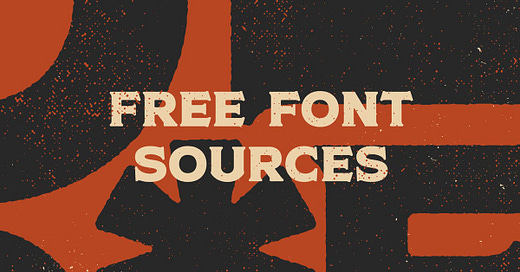What are Fonts vs Typefaces?
Before discussing where to source your fonts, we should address the elephant in the room: Fonts and typefaces mean two different things.
Typefaces are technically what most people call fonts. Times New Roman, Helvetica, and Comic Sans are examples of typefaces. They are a set of glyphs (letters, numbers, and symbols) with the same visual design, style, and construction.
Fonts are variations within a typeface. Some typefaces have only one version, but most have multiple, like bold, italic, heavy, medium, and more. Sometimes, they're represented by a number, which indicates weight. There's no standard system across type foundries (the companies and studios that make typefaces), so font names, weights, and descriptions are all relative.
Does the difference matter?
Don't worry if you mistake one thing for another. Only the most pedantic designers will pretend not to understand you. Most people say "font" because word processors made that the default term. I know hundreds of designers, for example, who do amazing work and don't know the difference.
Ultimately, you don't have to either. If someone corrects your vocabulary, you don't have to take them seriously because it's not a serious issue.
However, knowing the difference can help you in search engines. Everyone uses the word "fonts." Type that word into Google, and you'll get all the terrible cut-and-paste websites you can stomach. Type in "typeface," and the quality suddenly improves. Use expert vocabulary, and you'll get expert sources.
Similarly, you might get better results by searching for "open-source" typefaces. That is the term foundries and type designers use to describe their freely available, royalty-free typefaces.
Want to read more?
Explorers Design migrated off Substack in early 2024. If you want to support my work, you can find me on the new website by clicking the link below. It’s all the content you love with a few improvements.
Until then, never stop exploring!





